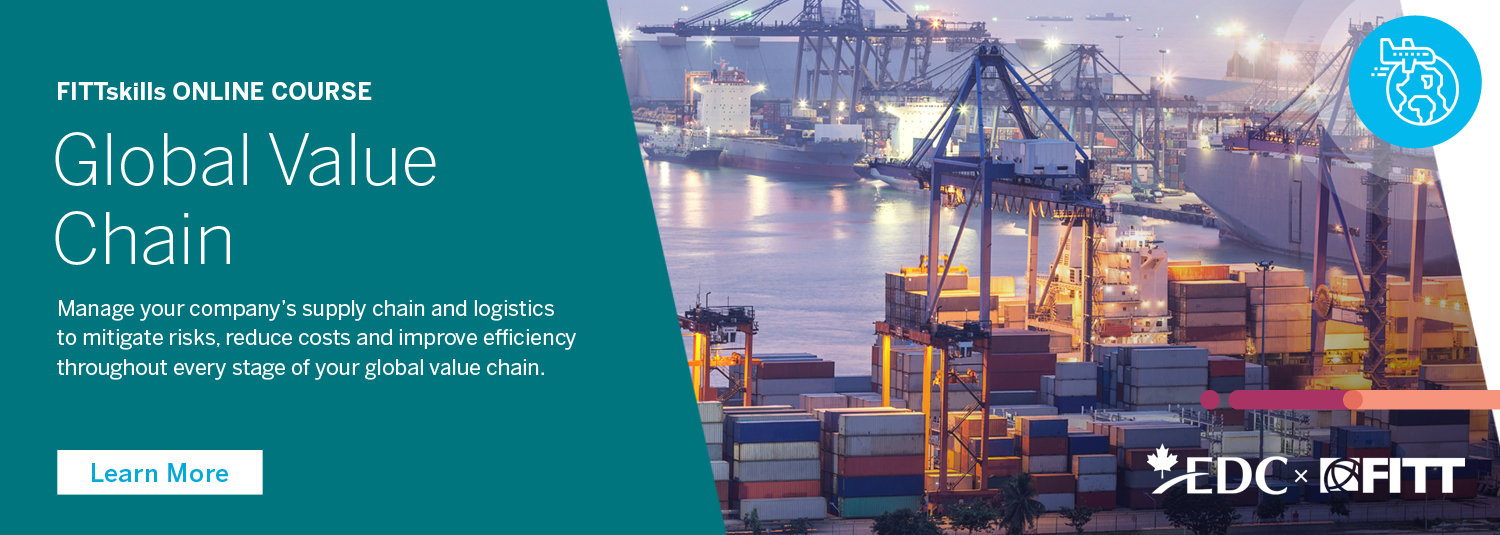
In a challenging global economy, businesses need to make every effort to stay profitable.
Sourcing from global suppliers is a widely used strategy for sustaining competitiveness and maintaining profit margins. Businesses need to balance low-cost sourcing with their own quality requirements, as well as risk and cost analyses.
Keep the purpose of global sourcing in mind by ensuring costing is realistic and includes all the costs of sourcing, such as planning, transition and implementation costs. If a competitive advantage is to be gained by lowering costs, it is important to ensure there are no hidden costs that will essentially eliminate any realized cost advantage.
To stay competitive and successful, utilize these 5 strategies to minimize the risks of global sourcing:
1. Manage product quality
The implications of a quality failure from an international source are much more severe than from a domestic source. With lead times that involve different time zones and much longer distances, it can take several months to rectify a quality problem.
Quality issues also affect downstream supply chains. Poor quality increases the rate of returns from unhappy customers, which results in discounting, recycling or disposal (write-off) of defective products, which increases reverse supply chain costs, which negatively impacts the bottom line. Ideally, the goal is to build an efficient supply chain with quality product throughout.
Many organizations minimize risk through:
- Rigorous supplier pre-qualification
- Preparing and agreeing on detailed product specifications with suppliers, e.g. quality of raw materials, labelling, packaging
- Agreeing to contract incentives and penalties for quality performance
- Balancing the emphasis on price competitiveness with quality requirements
- Using independent quality control inspections and audits to ensure consistency
- Sourcing a mix of global and domestic suppliers
- Nurturing relationships with suppliers of consistently good quality products
2. Pay attention to the logistics
Moving goods across borders and long distances is complex and in managing logistics, poor decisions can lead to a cascade of issues. Even assuming transport costs have been factored into your feasibility research, there are many risks to consider and plan for:
- Loss or theft in transit, including piracy
- Deterioration or damage
- Increased lead times due to distances
- Communication delays due to time zone differences and/or the need for interpretation
- Complex documentation requirements that may require research or consulting costs, e.g. import restrictions, permits, licences, quotas, standards, regulations
- Large international purchases may require formal international purchase agreements, as well as special packaging and shipping and handling procedures
Minimize logistical risks with:
- Demand forecasting that includes extended lead times
- Transport planning that includes customs/security issues, delivery time frames and work schedules
- Contingency planning that ensures alternate plans are in place in case of potential risk events, e.g. alternative local suppliers or additional travel routes to avoid potential disaster areas or accidents
- Services of freight forwarders and customs brokers to manage transport risks and documentation compliance
- Purchasing appropriate insurance to recoup losses
Want to learn more about managing your company’s supply chain and logistics to mitigate risks? Chech out the FITTskills Global Value Chain online course!
3. Mind your monetary risks
Although the use of foreign suppliers can save costs due to such factors as lower costs of labour and proximity to raw materials, there are also risks that can impact costs:
- Unanticipated and rising shipping costs
- Cost of delays or loss of goods in transit
- Rising costs of transactions, such as documentation fees, contract management fees and third party supplier audit fees
- Costs related to time zone differences, extra time for storage or transport delays
- Costs of managing the supply chain; the more complex the supply chain becomes, the more expensive it is to manage
- International exchange rates – lower domestic currency can result in good international sales of the finished goods, but increased costs of supplies
Monetary risks can be minimized by:
- Researching suppliers’ countries, e.g. monitoring exchange rates, monetary trends and policies
- Comparing exchange rates of different source countries
- Setting fixed costs and quantities of goods or timelines for services
- Selecting appropriate currency for contracts
- Use of insurance for credit, transport and cargo
- Use of currency exchange rate insurance, e.g. Toyota’s manufacturing strategy allows each plant to serve the local market and at least one other market across the world, which lets Toyota shift production if exchange rates change
- Use of third party providers, which transfers risks to the third party, e.g. freight forwarders, trading houses
- Use of a small number of suppliers; higher volumes and regular orders will lower per unit prices and lower implementation costs
Many organizations use primary and secondary sourcing as a mitigation strategy. A primary source is used as long as it meets company requirements for supply, delivery and quality, and a secondary supplier is available to cover shortfalls. Often the secondary supplier is on-shore or near-shore, to address supply issues quickly. Although typically more expensive, this can prevent greater monetary risk to the organization due to lost customers.
There are also financing tools available to organizations to offset financial risk, such as hedging against currency fluctuations.
4. Watch out for cultural differences and language barriers
Cultural differences and language barriers can complicate business communications, causing such issues as shipping delays and incorrect orders. Miscommunication can severely disrupt and frustrate business dealings, making international sourcing a negative experience for all parties involved. Being culturally sensitive can help mitigate this risk:
- Researching, as part of due diligence, countries’ culture, the way organizations are run, core societal values and communication styles
- Hiring a buyer’s agent or a staff person who can speak the local language and is familiar with the culture
- Keeping track of cultural holidays in suppliers’ countries to help with scheduling orders and shipments
- Using translators familiar with the type of business to ensure translations are accurate
- Using local legal counsel and agents when negotiating contracts
5. Be aware of laws and compliance
Other countries have different standards, laws, regulations and business practices that can impact sourcing from other countries, either by adding costs or requirements that would be considered illegal in one’s own country.
Questionable practices that can be related to an organization’s product can have a negative effect on an organization’s brand and reputation.
Minimize this risk with due diligence:
- Research laws, regulations and unwritten business practices in potential suppliers’ countries
- Research business reputation and legal record of potential suppliers
- Research domestic laws and regulations to determine liability of conducting business in other countries
- Research export requirements in potential suppliers’ countries to determine process and costs
- Detail code of conduct and acceptable business practices as part of the contract






great insightful learning